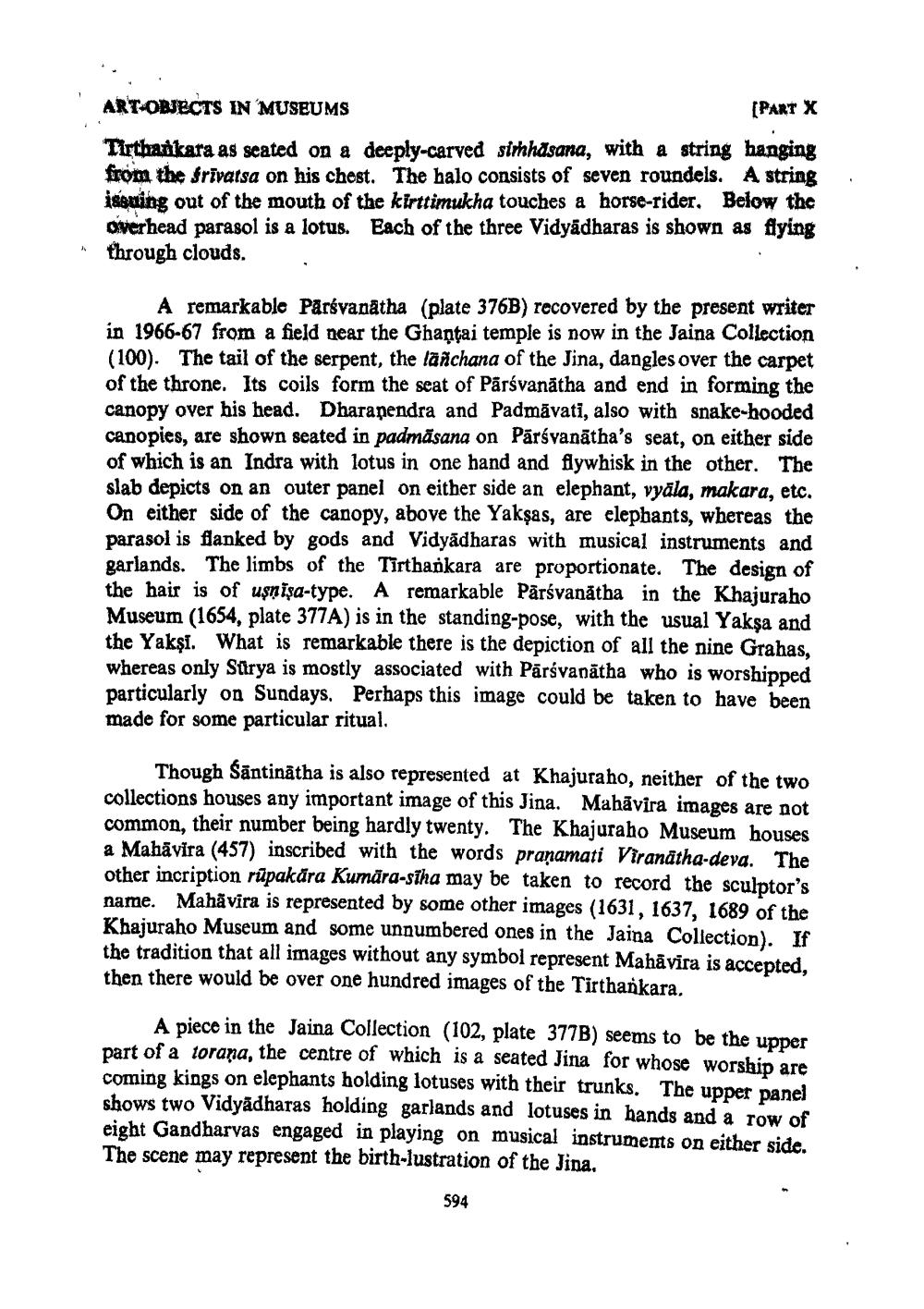________________
ART-OBJECTS IN MUSEUMS
(PART X
Tirthankara as seated on a deeply-carved simhasana, with a string hanging from the frīvatsa on his chest. The halo consists of seven roundels. A string
ning out of the mouth of the kirttimukha touches a horse-rider, Below the overhead parasol is a lotus. Each of the three Vidyadharas is shown as flying through clouds.
A remarkable Parsvanātha (plate 376B) recovered by the present writer in 1966-67 from a field near the Ghantai temple is now in the Jaina Collection (100). The tail of the serpent, the lanchana of the Jina, dangles over the carpet of the throne. Its coils form the seat of Pārsvanatha and end in forming the canopy over his head. Dharanendra and Padmavati, also with snake-hooded canopies, are shown seated in padmāsana on Pārsvanātha's seat, on either si of which is an Indra with lotus in one hand and flywhisk in the other. The slab depicts on an outer panel on either side an elephant, vyāla, makara, etc. On either side of the canopy, above the Yakşas, are elephants, whereas the parasol is flanked by gods and Vidyadharas with musical instruments and garlands. The limbs of the Tīrthankara are proportionate. The design of the hair is of uşnişa-type. A remarkable Pärsvanātha in the Khajuraho Museum (1654. plate 377A) is in the standing-pose, with the usual Yaksa and the Yaksi. What is remarkable there is the depiction of all the nine Grahas, whereas only Sarya is mostly associated with Parávanātha who is worshipped particularly on Sundays. Perhaps this image could be taken to have been made for some particular ritual.
Though Sāntinātha is also represented at Khajuraho, neither of the two collections houses any important image of this Jina. Mahāvira images are not common, their number being hardly twenty. The Khajuraho Museum houses a Mahavira (457) inscribed with the words pranamati Viranātha-deva. The other incription rūpakāra Kumāra-siha may be taken to record the sculptor's name. Mahāvira is represented by some other images (1631, 1637, 1689 of the Khajuraho Museum and some unnumbered ones in the Jaina Collection). If the tradition that all images without any symbol represent Mahāvira is accepted, then there would be over one hundred images of the Tirthankara.
A piece in the Jaina Collection (102, plate 377B) seems to be the upper part of a torana, the centre of which is a seated Jina for whose worship are coming kings on elephants holding lotuses with their trunks. The upper panel shows two Vidyadharas holding garlands and lotuses in hands and a row of eight Gandharvas engaged in playing on musical instruments on either side. The scene may represent the birth-lustration of the Jina.
594




